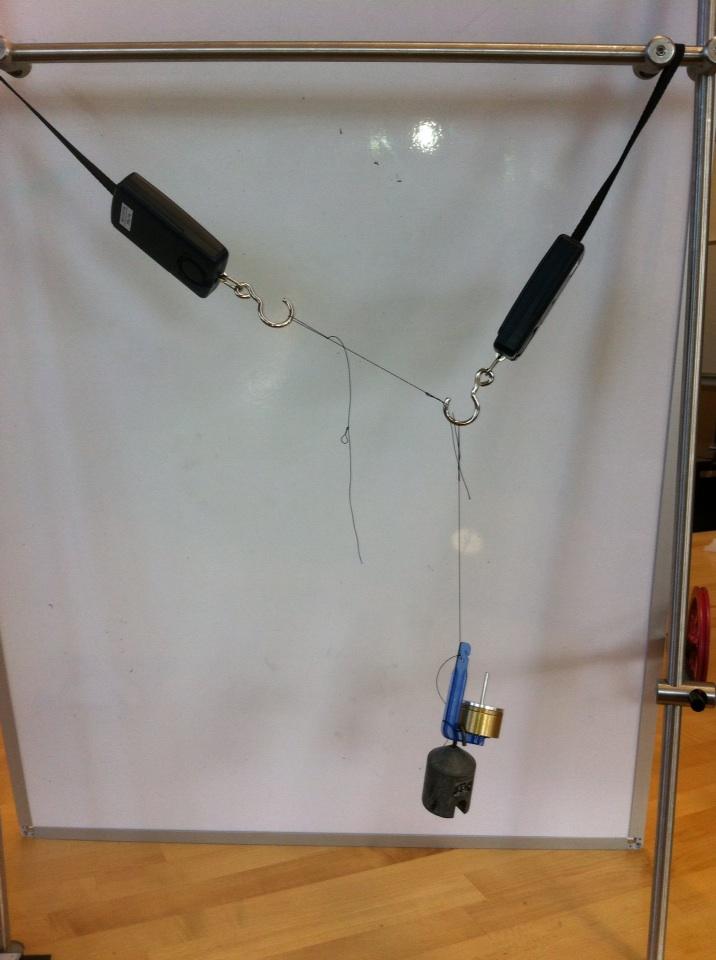A classic problem -- I think I first found it in the Giancoli text, but some variant is in all comprehensive problem sources -- asks for the tension in two angled ropes supporting a hanging object, given the mass of the object and the angles of the ropes. The version I assign includes a 33 kg stoplight, a 37 degree angle, and a 53 degree angle.
Firstly, adapt the problem for AP Physics 1 rather than the traditional AP B course. To do that, I begin the question by asking "Is it possible to calculate the tension in the left-hand rope? If so, explain with words and without numbers how the tension could be
calculated. You need not actually do the
calculations, but provide complete instructions so that another student could
use them to calculate the tension." It's okay if students choose to do the calculation first, then tell me how it's possible. Of course, the obvious approach is to explain that we can set up two equilibrium equations (one vertical, one horizontal) with two unknowns, so the problem is solvable.
Next, I ask for the solution for the tension in the left rope. They calculate something like 220 N.
In class, I remind everyone that any numerical solution to a physics problem is not really an "answer," but more accurately a "prediction" of the result of an experiment. I should always be able to verify a prediction by setting up the suggested experiment. Thing is, I don't have a 33 kg object to string up from ropes. Why not? Because, 33 kg is like 70 pounds. The mass sets in my classroom don't go above about 1 kg.
And there lies the way to verify the prediction -- scale everything down by a factor of 100. I do have 330 g to put on a hanger. Then, I should get a tension in the left rope not of 220 N, but of 2.2 N.
In the above picture, I've arranged the lengths of the ropes such that the angles are in the right neighborhood. Sure enough, the left rope read a tension of 2.1 N, within the 0.2 to 0.3 N tolerance I expect on a typical classroom spring scale.
Not only does this experiment reinforce the physical meaning of the problem's solution, not only do we see whether the answer is "right" or not, this experiment can help emphasize why the answer "221.43 N" is utterly ridiculous. The scale can't read better than about 2.2 N or 2.1 N -- it can't read 2.145 N. Only two digits mean anything (not two decimal places, two DIGITS). Seeing a "scale reading" rather than an "answer" is the first step toward internalizing that physics is about experiments, not numbers.

I did this today with my students, and a few of them took an unconventional but clever approach: they used an angled coordinate system and split the weight of the stoplight into its components. I commended them and reminded them that this method will only work when the ropes are perpendicular (which is rare, I guess).
ReplyDeleteQuestion - what are those black cables/ties that are attached to your spring scales? Is that a DIY remedy?
It's part of the electronic scales -- they came with a wristband. :-)
ReplyDelete